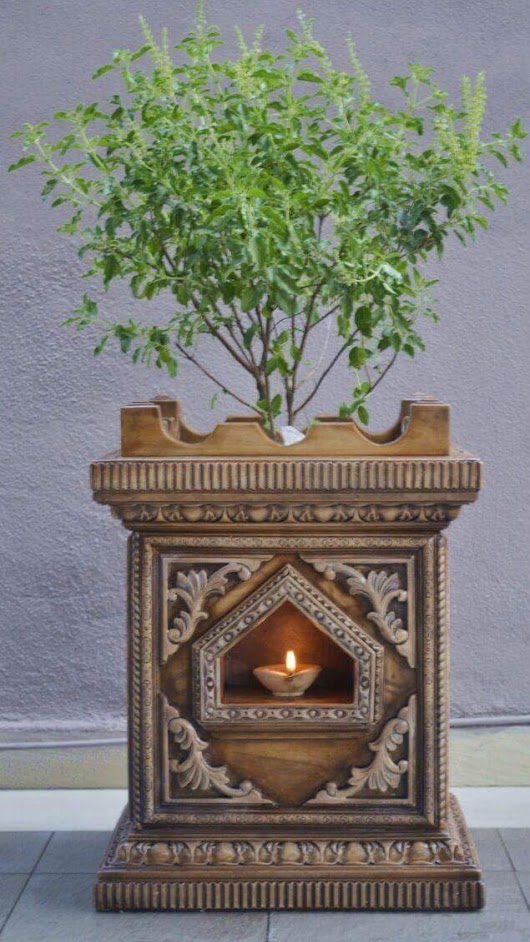A Plant much revered in the South Indian Continent. Every house-hold will have it in the front or backyard. Women worship the plant with water and lighting a lamp near the place. This practice is done mostly in the early mornings after taking bath. Most of the times, it is placed in a altar (or) earthly pot where people can go around it. The plant requires very low maintenance and grow fast in warm weather
We used to pluck the leaves and eat them after washing them. We have seen the Tulsi in a water given as a ‘prasad’ (holy offering) in Temples. You just the sip from the teaspoon offered to you in your palm and put the leftover on your head as a form of respect. Never thought this Tulsi water can keep the scalp clean and keep the dandruff at bay. Tulsi is waiting in line to get the western attention after the coconut oil and turmeric.
Tulsi or Tulasi (Ocimum Tenuiflorum) or known as Holy Basil is a sacred plant in Hinduism. The plant is cultivated for religious and medicinal purposes. It’s is also available as essential oil.
Ayurveda says Tulsi has magical properties to alleviate ‘khapa’ effects, one of the three doshas in the body. It’s known as an adaptagen, an herb that supports the body’s stress response whether it’s physical, metabolic or psychological. The temples in India had them all over the yards without explicitly mentioning the benefits. Another amazing factor is Tulsi effect on the environment. Most plants largely uptake Carbon Dioxide (CO2) and release oxygen during the day (photosynthesis) and uptake oxygen to release CO2 during the night (respiration). Tulsi, like other plants like Peepal plant, Orchid, Neem tree, Aloe Vera, etc release oxygen during night. Tulsi gives out oxygen for 20 hours and Ozone for four hours a day along with the formation of nascent oxygen which absorbs harmful gases like carbon monoxide, carbon dioxide and sulfur dioxide from the environment. So when you visit a Indian grocery shop next time, grab the plant normally sold in a small Styrofoam containers. You can transfer the plant to a bigger pot (or) to your landscaped yard. Your guests will appreciate the aroma and they can pluck the leave to eat it too.
Author: Matt Ravikumar does ERP consulting as full-time job. He has published many books that can be searched in Amazon under ‘matt ravikumar’. His writing and cartoonist contents are available in ‘www.cartooncartons.com’, ‘www.mattravikumar.com’


